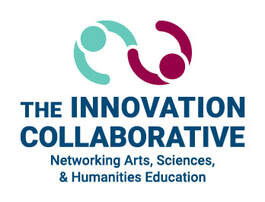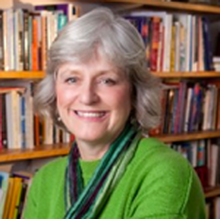Neuroscience, Creativity, and Innovation: A Collaborative Thought Leader Conversation – Part 211/8/2022 The Collaborative’s Research Thought Leaders help provide the strong research foundation upon which the Collaborative’s work rests. Each Thought Leader is nationally and internationally recognized in their own field and brings an extensive depth of experience and expertise. They also are adept at working across disciplines. In our previous newsletters, we brought you interviews with each of our Thought Leaders and also examined ways to apply their important ideas in STEAM learning. This new series showcases conversations between various Thought Leaders around an important and relevant topic. This third article in this series is Part 2 of the inspiring conversation between a leader in neuroscience, Sandi Chapman, PhD, and a leader in creativity, Bonnie Cramond, PhD. Part 1 of this conversation was published in the Collaborative’s spring, 2022 newsletter. In it, Sandi and Bonnie discussed why it is important for today’s students to develop creative (a novel idea) and innovative (applying the novel idea to solve a problem) thinking skills. In Part 2 of the conversation with Collaborative Executive Director Lucinda Presley, they discuss how to promote these thinking skills, especially though the intersections of the arts and sciences. Sandi Chapman, PhD, a cognitive neuroscientist, is Founder and Chief Director of the University of Texas at Dallas Center for BrainHealth. She also is the Dee Wyly Distinguished University Professor in the UT Dallas School of Behavioral and Brain Sciences. She is a well-known pioneer in the field of brain health, developing brain health fitness measurements and protocols that benefit students and adults alike in the US and worldwide. (See newsletter article about her.) Bonnie Cramond, PhD, is Professor Emerita of Educational Psychology and Gifted and Creative Education at the University of Georgia (UGA) and former Director of the Torrance Center for Creativity and Talent Development at UGA. She is known for her research in the assessment and development of creativity, especially among at-risk students, and for her highly respected work in the creativity field. (See newsletter article about her.) Are there any specific tasks you can recommend for teachers or people in general to do to promote creative and innovative thinking? Bonnie Empathy can be taught. To address that, I think that the Future Problem Solving Program is great. It teaches kids the steps to solve a problem. They do research, they work together in teams, and they have to learn to cooperate. Part of the process is having the students think about how others will react to the problem and their solution, which develops empathy, compassion, and especially appreciating others’ strengths. Teachers can learn to do Future Problem Solving in any subject area. I worked with teachers in Korea who wanted to infuse creativity into science. I taught them how to use the Future Problem Solving process with their science curriculum. I couldn’t just say, “be creative”. They needed something concrete and structured. They embraced this and it really helped them. While the Future Problem Solving program is competitive, you don’t have to do the competitive program and instead can just infuse the process into your curriculum. For example, my daughter, who was in Future Problem Solving throughout her school years, used this process to teach her college students about dystopian literature. Also, there are other good programs teachers can use that give them a structure and that they can use these to teach their standards. Some examples are: The Invention Convention, Invent Now, Odyssey of the Mind, Destination Imagination, and. Dean Kamen’s FIRST Global Programs. Sandi One of the things that we stress for teachers is that siloed academic areas are not preparing students for the future. We have to train them how to think, integrate, and converge ideas across different areas. One way to do this is through data visualization. “Data visualization is one the most important skills that students can learn." Data visualization is where we add simple sketching, which isn’t just art, it also helps people when they are learning something. Sketching is about extracting the big idea concepts, getting down as many quick, bold ideas as you can. In our sketching, we use zoom in [get the facts] and zoom out [get the broad concepts]. We then zoom deep and wide, which is how many different ways can that apply in life. It is sketching as many ideas as you can from a math problem, or a science problem, or an English or history lesson. This triggers innovative, possibility, and creative thinking in a very dramatic and fun way. We are moving into a data visualization age where people want to see their progress. If I can visualize information, I can learn it faster and it’s going to have more meaning to me to change the world. I’m working with Bruce Mau, who is one of the great design thinkers of all time. He says sketching is the magic sauce to innovative thinking and creative problem solving. We need to teach teachers to let the kids have fun with the sketching, whether it’s individually or in teams, and come up with as many ideas as they can from the lesson, such as new interpretations or new applications. In sketching, students don’t have to worry about “is it good art?”. I think that in art we often expect the students to draw a certain way with precision, but sketching is about exploring ideas and possibility thinking as rapidly as possible and not with precision. It helps the students build stronger gestalt level thinking that can link the many different pieces of facts that may be meaningful to them. Bonnie I think, going along with that, is this idea of webbing [coming up with lots of ideas around a certain topic and then creating a web that links related ideas]. Students often take linear notes and that isn’t connecting ideas the way webbing is. “It’s good to get the students to brainstorm where they can web the ideas and make new connections.” Also going along with what Sandi said, when I was a classroom teacher, I used to let my students do cartooning, especially in science. This is sketching, but, for example, it’s doing a cartoon of a science experiment and seeing what happens in the process. My son was a visual learner, but 98% of learning in schools is verbal. We reach more students when we teach them various ways to think and express their ideas instead of only verbally and in written form. Sandi I agree. How do the intersections (syntheses) of the arts and sciences promote creative and innovative thinking? Sandi Rote learning is the most fragile form of knowledge but it’s the most common form of knowledge that we teach. In the human brain, the frontal lobes start to develop in elementary school through middle school and through high school by connecting these facts to form inner constructs of synthesis. Synthesis isn’t that we need to agree on a single big concept. Instead, synthesis should also engage innovation and possibility thinking to derive as many broad concepts as possible. We’ve shown that the frontal networks are undergoing rapid change around middle school to young adulthood. We’ve shown these networks can be strengthened by having students not just attend and remember a single fact but very quickly pull a set of facts together to form bigger ideas and then create ways these big ideas impact their personal lives. That’s what builds an agile thinker who can also stay on task – take the information in, then zoom out (draft big ideas), then connect the dots in different ways to think of how to apply it to a more general context. This enhances the brain’s health and speed of connectivity. Because of technology, our brains are exposed to 20,000 more pieces of information than they were 7-8 years ago. Our brain isn’t built to deal with so much information in a meaningful way – so it paralyzes learning and thinking about the information in a meaningful way. When faced with too much data, we don’t synthesize; we don’t make decisions, and that’s why our frontal lobes are developing slower than in almost any other generation. Teaching people to find the key information they need to know, how to synthesize that, and what’s relevant to use in a meaningful way builds the frontal lobes. It builds you as an innovative reasoner, a strategic thinker. When we train young adults, the smartest people aren’t those who know the most facts; the smartest are those who, out of the 100 things they are exposed to, can find the 2 most important. How can we help students today vet facts to see what is true and what they need to question and seek more information about? That’s the process that some of the Collaborative rubrics are teaching: how to sort through information and to see if it applies. Bonnie What the Collaborative does with synthesis is excellent. It promotes the fact that we should be doing transdisciplinary teaching, where disciplinary boundaries are erased. Humans have created these boundaried categories of knowledge (science, social studies, art, etc.) that haven’t changed in hundreds of years Those categories can be crossed. We don’t have to live in these silos of knowledge. In Walter Isaacson’s excellent biography of Steven Jobs, he made the case that Jobs’ products were so successful because Jobs married technology and design. Jobs had a background in design and used that to make his products distinctive and appealing. The combination of art and technology was synergistic. That’s the focus of the Collaborative, which is an excellent focus, because our brains originally don’t think in those silos. We learn to do that because that’s the way we are taught but that’s not the way the world is organized. "“The more that we can help students see that everything is interconnected, the better it is." If you look at some of the greatest thinkers of all time, such as Leonardo DaVinci, they are the ones who did combine disciplines. They didn’t separate art and science. What the Collaborative emphasizes that is so important is that information is important but the thinking skills which can cross over are the most important. “People who are able to make those crossovers are going to be the most successful, innovative people.” Sandi Especially in this future we are living in. I know that Susan Hockfield, who was president of MIT, is writing about convergence like you were talking about, Bonnie. It’s not knowledge in a single field any more that’s going to allow us to discover. “We need to work across disciplines." For example, there are so many aspects that feed into brain health, not just cognitive neuroscience, knowledge of how the brain works. It’s having knowledge of data visualization, of how medicine and sleep affect brain health, of how the brain learns, of how we connect with people, of how we have purpose in what we are doing, and of how depression and anxiety affect the brain. So, teaching people to integrate ideas across core content areas is the best way we are going to make progress in solving the complex issues of the day. Bonnie I think that’s a very important point and I think what you have touched upon is the mental health and emotional well-being that creativity supports. I keep reading about with drugs, alcohol abuse, and suicides, how much more stressed the kids are today than in the past. I’ve always thought if we could help kids learn to express their feelings creatively, they would have fewer needs to act out. For example, one of my daughter’s friends in high school committed suicide and my daughter did lots of creative things that allowed her to express her feelings in a positive way such as writing poems, making a website about her friend, writing anecdotes with friends of how they remembered this friend, and planting a garden in memory of this friend. We don’t think enough about how creative outlets can help with emotional health. I wrote a paper for a creativity organization about how I turned to creative outlets when I lost my husband and my son. I paint, I cook, I write poetry, and I garden as ways to deal with the grief. Sandi To your point, Bonnie, when we look at brain health, there are 3 factors that contribute to this emotional well-being. They are emotional stability, clarity of thinking, which is possibility and innovative thinking, and connectedness to people and purpose. We found in our training of adults that these tactical brain strategies reduce depression by almost 60% and stress by 40%. We don’t approach well-being from a mental health perspective, but more as capacity building. We teach people to be innovative, possibility thinkers, empowering them to become more of what they can be instead of defining themselves as someone who is, for example, depressed and unable to find joy. We now have 16,000 people enrolled in the BrainHealth Project from ages 18 to 100 and we are in every state and 23 countries. The whole focus is to help people embrace the potential of the human mind instead of labeling them. Is there anything specific about the synthesis of the arts and sciences that promotes the creative and innovative thinking? Sandi That’s where sketching comes in. If you sketch, it makes you synthesize because you are looking at how many things you can see from this. Sketching makes you synthesize, getting into the abstract and conceptual. It gets rid of the weeds. It moves you out of procrastination where you are bogged down in the details. It also could be done using painting, clay, or food. Art allows you to move forward to capture synthesis about big ideas. Synthesis isn’t about what is the best theme of this or the single interpretation. It’s always pushing innovative thinking that every single thing you do has many possibilities. It’s moving away from “there is a single best answer or single best artform”. By combining art and science and exploration, we are able to elevate clarity of thought and capitalize on what the brain does best – innovate new ways to do things. The art of visualization is becoming a field in itself to convey complex ideas in simple, understandable ways. Bonnie I think it’s also motivation. They talk about how not enough women and minorities go into science and math. A lot of times it’s because these courses can seem so dry. I think that by synthesizing creative activities into the sciences, it makes them more motivating for those who are reluctant to engage. The art/science synthesis can get more people involved than would have been. Thanks to both for an amazing and provocative conversation! You've certainly given our readers a lot to think about
0 Comments
Your comment will be posted after it is approved.
Leave a Reply. |


